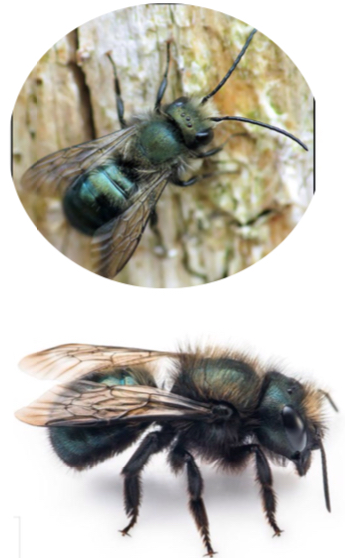Worldwide, Insect and Bee populations are in decline. We rely on these important pollinators for our food! In North America, our Native bees are facing survival challenges caused by loss of habitat, predators, parasites, pesticide use, and many other factors.
Why raise Mason Bees?
- To increase the species survival rate. By getting involved you will be
providing a clean and safe nest environment, which greatly improves the
survival rate of the next generation. - It is a fun, fascinating and interactive hobby for adults and children alike.
Inexpensive and not time-consuming. - Minimal time and effort involved and provides great benefits to your
garden. You will notice increased yield of fruit and vegetables and prolific
blooms on your flowering plants.
What’s involved in raising Mason Bees? Everything you need to know about the fun and joy of keeping Mason Bees may be found on the downloadable fact sheet below. 👇
A bit about Mason Bees
Beneficial pollinator for a variety of plants and prized for efficiency in pollinating fruit trees
Shiny dark blue-green metallic body; often mistaken for flies
Hairy body for collecting pollen
Females slightly larger than males; All females are Queens
Lifespan: Short!
Males – 2 Weeks
Females 4 – 6 weeks (between March to May)
One generation per year
Forage range:
100m radius from Bee house; attracted to early blooming plants and native plants
Emerge when temperatures reach approximately 13 degrees Celsius (before other bees emerge)
Will fly in light rain

©️ Cheryl Papove 2022